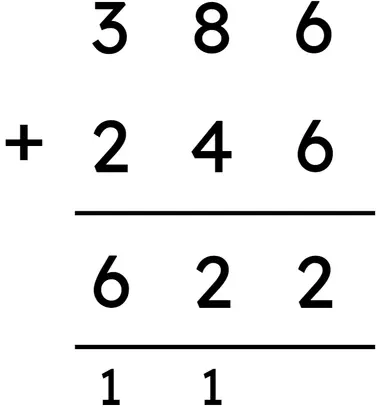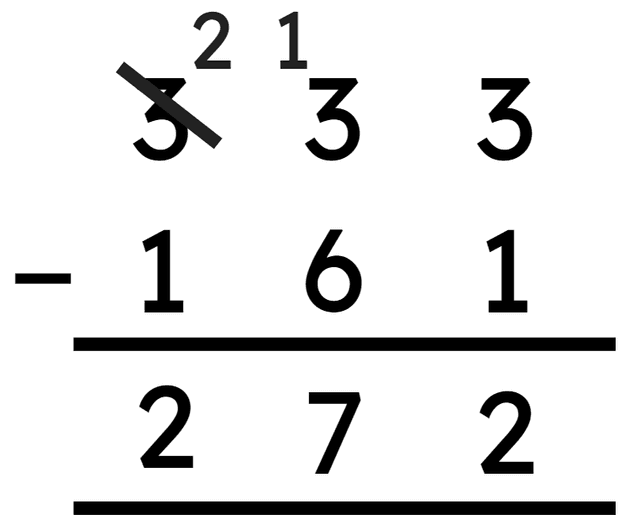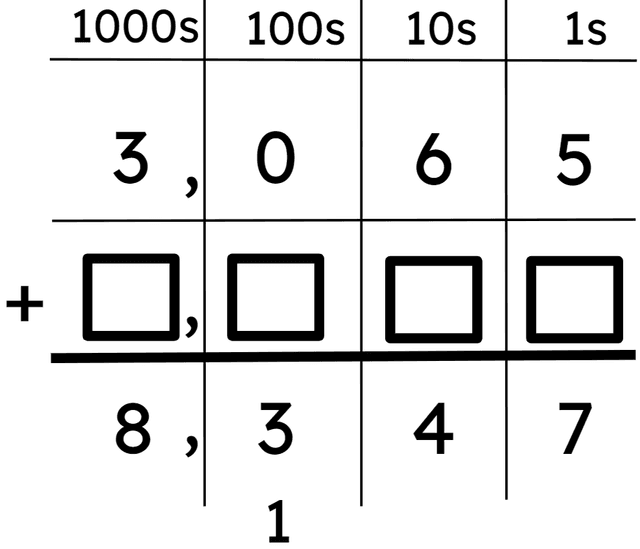Myths about teaching can hold you back
- Year 4
Pupils use strategies to make solving calculations more efficient
I can use strategies to make solving calculations more efficient.
- Year 4
Pupils use strategies to make solving calculations more efficient
I can use strategies to make solving calculations more efficient.
These resources were made for remote use during the pandemic, not classroom teaching.
Switch to our new teaching resources now - designed by teachers and leading subject experts, and tested in classrooms.
Lesson details
Key learning points
- Equivalent calculations can be used with the same difference or same sum to make calculations ‘easier’.
- A number line can be used to represent more efficient methods.
- Inverse, the relationship between addition and subtraction, can be used to solve missing number problems.
Keywords
Efficient - Working efficiently means finding a way to solve a problem quickly whilst also maintaining accuracy.
Equivalent - Two or more things have the same value.
Inverse - The opposite in effect. The reverse of.
Common misconception
When using adjustment (e.g. 456 − 199), pupils may forget to subtract or add 1 to both parts.
The emphasis of same difference can encourage children to ensure they have subtracted or added to both parts of the calculation. Clearly display the visuals in this lesson to support with this.
To help you plan your year 4 maths lesson on: Pupils use strategies to make solving calculations more efficient, download all teaching resources for free and adapt to suit your pupils' needs...
To help you plan your year 4 maths lesson on: Pupils use strategies to make solving calculations more efficient, download all teaching resources for free and adapt to suit your pupils' needs.
The starter quiz will activate and check your pupils' prior knowledge, with versions available both with and without answers in PDF format.
We use learning cycles to break down learning into key concepts or ideas linked to the learning outcome. Each learning cycle features explanations with checks for understanding and practice tasks with feedback. All of this is found in our slide decks, ready for you to download and edit. The practice tasks are also available as printable worksheets and some lessons have additional materials with extra material you might need for teaching the lesson.
The assessment exit quiz will test your pupils' understanding of the key learning points.
Our video is a tool for planning, showing how other teachers might teach the lesson, offering helpful tips, modelled explanations and inspiration for your own delivery in the classroom. Plus, you can set it as homework or revision for pupils and keep their learning on track by sharing an online pupil version of this lesson.
Explore more key stage 2 maths lessons from the Column addition and subtraction with 4-digit numbers unit, dive into the full primary maths curriculum, or learn more about lesson planning.

Licence
Prior knowledge starter quiz
6 Questions
Q1.Which equations would it be most efficient to solve using column subtraction?
Q2.Which equations could be more easily solved using a mental calculation?
Q3.Alex is trying to calculate the sum of 214 and 497 Which hundreds number will be closest to his answer?
Q4.What is the most efficient way to calculate 285 − 99 = ?
Q5.Look carefully at Alex’s column addition. Which of these statements about the sum is true?

Q6.Look carefully at Alex’s column subtraction. Which of these statements about the difference is true?

Assessment exit quiz
6 Questions
Q1.Which equations could be more easily solved using a mental calculation?
Q2.Which equations would it be most efficient to solve using column subtraction?
Q3.What is the most efficient way to calculate 1,745 − 199 = ?
Q4.4,004 - 10 =
Q5.Complete the column addition. What number has been added to 3,065 to sum to 8,347?

Q6.Complete the column subtraction. What is the missing whole?



